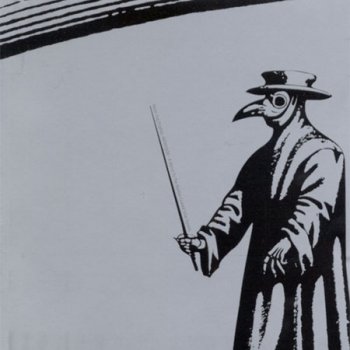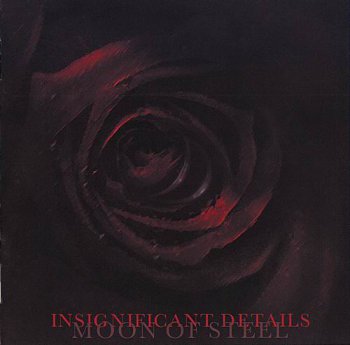The Guess Who - Canned Wheat (2024 Remaster) 1969
Исполнитель: The Guess Who Альбом: Canned Wheat (2024 Remaster) Жанр: Rock, Pop Rock, Psychedelic Rock Год: (2024) 1969 Страна: Canada (Winnipeg, Manitoba) Лейбл: Legacy Recordings Формат: FLAC (tracks) Official DR value: DR11 Разрядность: 24bit / 96kHz Stereo Размер: 875 MB Инфо: bandcamp Залито на: XFile (3% восстановление) «Exclusive for Lossless-Galaxy»

The Guess Who - Canned Wheat (2024 Remaster) 1969
Исполнитель: The Guess Who Альбом: Canned Wheat (2024 Remaster) Жанр: Rock, Pop Rock, Psychedelic Rock Год: (2024) 1969 Страна: Canada (Winnipeg, Manitoba) Лейбл: Legacy Recordings Формат: FLAC (tracks) Official DR value: DR11 Разрядность: 24bit / 96kHz Stereo Размер: 875 MB Инфо: bandcamp Залито на: XFile (3% восстановление) «Exclusive for Lossless-Galaxy»
08 11, 2024
Impellitteri - War Machine 2024
Исполнитель: Impellitteri Альбом: War Machine Жанр: Heavy Metal, Power Metal, Shred Год: 2024 Страна: USA (Los Angeles, California) Лейбл: Frontiers Records s.r.l. Формат: FLAC (tracks) Official DR value: DR6 Разрядность: 24bit / 44.1kHz Stereo Размер: 525 MB Инфо: metal-archives Залито на: XFile (3% восстановление) «Exclusive for Lossless-Galaxy»
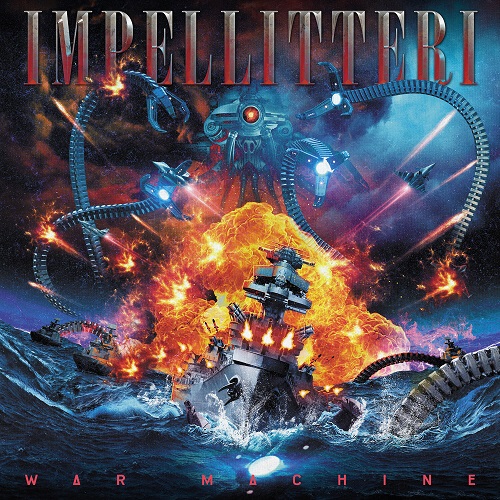
Impellitteri - War Machine 2024
Исполнитель: Impellitteri Альбом: War Machine Жанр: Heavy Metal, Power Metal, Shred Год: 2024 Страна: USA (Los Angeles, California) Лейбл: Frontiers Records s.r.l. Формат: FLAC (tracks) Official DR value: DR6 Разрядность: 24bit / 44.1kHz Stereo Размер: 525 MB Инфо: metal-archives Залито на: XFile (3% восстановление) «Exclusive for Lossless-Galaxy»
07 11, 2024
Neal Morse & The Resonance - No Hill For A Climber 2024
Исполнитель: Neal Morse & The Resonance Альбом: No Hill For A Climber Жанр: Progressive Rock Год: 2024 Страна: USA (Van Nuys, California) Лейбл: InsideOutMusic Формат: FLAC (tracks) Official DR value: DR9 Разрядность: 24bit / 48kHz Stereo Размер: 469 MB Инфо: progarchives Залито на: XFile (3% восстановление) «Exclusive for Lossless-Galaxy»
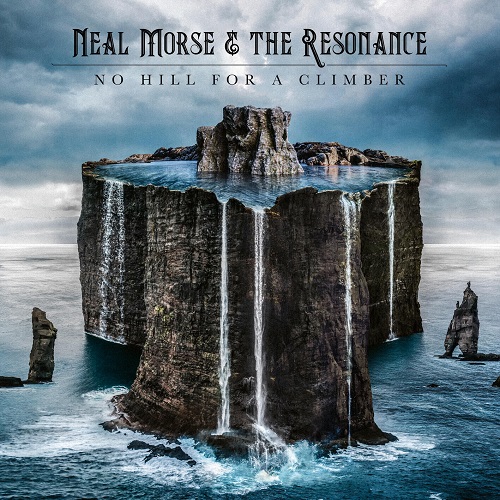
Neal Morse & The Resonance - No Hill For A Climber 2024
Исполнитель: Neal Morse & The Resonance Альбом: No Hill For A Climber Жанр: Progressive Rock Год: 2024 Страна: USA (Van Nuys, California) Лейбл: InsideOutMusic Формат: FLAC (tracks) Official DR value: DR9 Разрядность: 24bit / 48kHz Stereo Размер: 469 MB Инфо: progarchives Залито на: XFile (3% восстановление) «Exclusive for Lossless-Galaxy»
07 11, 2024
Жанры
Lossless Galaxy Release
Русская музыка
--Поп
--Рок
--Панк
--Альтернатива
--Металл
--Рэп, Хип-Хоп, R'n'B
--Джаз и Блюз
--Фолк
--Шансон, Авторская песня
--СССР
Зарубежная музыка
--Pop
--Rock
--Hard Rock
--Progressive & Art-Rock
--Pop-Rock & Soft Rock
--Instrumental Rock
--Heavy, Traditional, Industrial Metal
--Power, Gothic, Sympho Metal
--Thrash, Speed, Groove, Modern Metal
--Death, Melodic Death, Doom, Dark Metal
--Black, Pagan, Folk, Viking Metal
--Alternative
--Punk
--Disco, Eurodance
--Rap, Hip Hop, R'n'B
--Reggae, Ska, Dub
--Jazz, Blues, Soul
--Folk, Country, Ethnic
--Electronic, Ambient, New Wave
--House, Techno, Trance
Другие жанры
--New Age, Relax, Meditative & Flamenco
--Chillout, Lounge, Downtempo, Trip-Hop
--Drum & Bass, Jungle, Breakbeat, IDM
--Classical / Классическая музыка
--Soundtrack
--Музыкальные сказки
Vinyl Rip
HI-Res / DVD-Audio / DTS
--SACD
--DSD
--DVD-Audio
Сборники Lossless-Galaxy
Альбомы 2022
Альбомы 2023
Теги
1st Press 2022 2023 2024 70... AOR Black Metal Blues Blues Rock Bootleg Series Classic Rock Death Metal Discography DSD Exclusive for Lossless-Galaxy Folk Rock Gothic Metal Hard Rock Heavy Metal Hi-Res Japanese Edition Jazz Jazz Rock Limited Edition lossless Melodic Death Metal Melodic Rock Modern Electric Blues Pop Pop Rock Power Metal Prog Rock Progressive Metal Progressive Rock Psychedelic Rock Rock SACD Symphonic Metal Thrash Metal Дискографии от KoGGaN
 Автор: vitaljazz, 7 августа 2010, Комментариев: 0, Просмотров: 1 120
Автор: vitaljazz, 7 августа 2010, Комментариев: 0, Просмотров: 1 120MOON FOG PROPHET - DIM DUM SING THE SUN - 1998
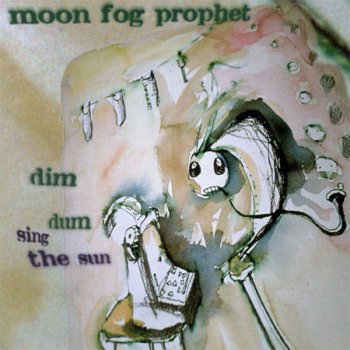
YEAR: 1998
STYLE: Progressive Rock/ Psychedelic/ Space Rock
FORMAT: FLAC (Tracks + Log + Cue + 5% Recovery)
SIZE: 277 Mb
COUNTRY: Finland
THE BAND: Mika Rättö / keyboards, vocals; Teemu Majaluoma / guitars, vocals; Mikko Elo / bass; Veli Nuorsaari / drums
Moon Fog Prophet were one of the more idiosyncratic Finnish progressive bands to appear in the 1990s. Consisting of Mika Rättö (keyboards, vocals), Teemu Majaluoma (guitars, vocals), Mikko Elo (bass) and Veli Nuorsaari (drums), they have quietly produced a string of quirky and diverse albums that for all their various influences share a distinctive - and often very off-beat - style that is their very own.
The two early tracks that appeared on the Metazoon (Metamorphos Meta-014CD) sampler disc, "Jesters Intervene" and "Followers", carry a Hawkwind-like vibe with their pummelling beats, manic distortion guitar riffs and Rättö's howling vocal interjections. However, they also have spidery keyboard work and King Crimson like melodic angularity that would completely elude the hairies of Hawkwind.
Their debut album Dim Dum Sing the Sun (Metamorphos Meta-018CD) unveils a much more versatile Moon Fog Prophet. Among the album's ten shortish songs are 70's Bowie-style rock ("Roof Romance"), an Alan Parsons-like pseudo-orchestral ballad ("Amusement Park"), mellow psychedelic pop with an irritatingly cheery synth riff ("Things I See"), gloomy chanting with jagged guitars and robotic march drums ("Spinning Cousins") and a laid-back, jazzy space-out with symphonic synthesizer developments on top ("Whisper in Stone"). Rättö's voice shows considerable range and mutability, at best approaching Peter Hammill-like mumble-to-roar dramatics to match the alternatively subdued and bombastic dynamics of "Planet for One Man". The three instrumental tracks offer the most progressive moments, from the ominously growling volume-pedal-swell guitar lines of "Classic Bells" to the metallic unison riffs and bombastic multi-synth tornado of "Dance of the Emerald Knights", the album's highlight. Production and instrumentation flaunt a rough, hazy retro-edge (not entirely successful a strategy, IMO) but have no scruples in using obviously more modern sounds as well. The resulting mix is both baffling and exhilarating, constantly changing from track to track, even if some would benefit from longer development arcs. For hardcore prog fans some of this may be too straight-ahead or eccentric, but they too should find some attractive moments here.
When They Opened Their Parachutes ... Silence (Metamorphos Meta-022CD) is a more integrated and concise collection of more conventionally progressive songs. They include dreamy, Floyd-style space rock with glittering synthscapes; a suitably jovial and idiomatic symphonic rock; and one manic, ever-building instrumental skimming the edge of dissonance with Emerson-like keyboard shredding and effects, fast and noisy space-rock rhythm guitar, sledgehammer drums and throbbing effects bass. While more cohesive than the first album, the album is less successful in maintaining its interest throughout, and, ultimately, less rewarding.
MERN3336 - A Mirror to the Marble-Coated Solar System (Metamorphos Meta-027CD) is the weirdest, most experimental of the three. At times mysterious, spacey or just plain weird, it carries a strong retro-psychedelic vibe complete with Hammond and piano-heavy instrumentation and orchestrations close to late-1960s psychedelic pop, yet with fragmented song structures and occasionally truly warped instrumental explorations that make a complete mockery of any attempt to call this just pop music. Early Van der Graaf Generator can also be heard humming behind some of the arching vocal melodies. Songs such as "In the River of " and "Despite the Sticky Potatoes" (yes, the lyrics are very abstract and stream of consciousness) serve up a combination of lyricism and dissonance, symphonic melodicism and sonic experimentalism that is just as exhilarating as most top progressive acts have to offer. But 75 minutes is a long time and includes its share of gratuitous vamping, the worst offender being the metrically-skewed and harmonically-daffy jam at the end of "The Joy and the Agony of Being Caught" whose monotonously clanging bass pattern, leaden keyboard clusters and distorted vocal splutters sound like outtakes from a hangover-morning session in the rehearsal room. This is not perfect but in the long run probably the most rewarding album they have recorded.
For all its ambition, MERN got far less attention and credit than previous releases, mainly because it coincided with the dissolution of Metamorphos which left the record more or less hanging on its own. At this stage the band changed course and in the process developed two distinct personalities that both carry on the concept.
The first approach had the band translating their name into Kuusumun Profeetta and releasing Kukin kaappiaan selässään kantaa (Ektro Records Ektro-011), which is strikingly different from all their previous releases. A collection of dark, folksy tunes dominated by acoustic guitars and soft keyboard embellishments, the album is carried by Rättö's melodious Finnish vocals and minor-dominated melodies that draw from the Slavonic melancholy so prevalent in contemporary Finnish pop music. The 10-minute "Askeleita rannalla" ("Steps on the Beach") could be described as More-era Pink Floyd playing on a desolate beach at night with only a transistor radio for amplification, and the dusky atmosphere of "Kynttilät syttyvät varhain" ("The Candles Light Up Early") and "Aamuyön tunteina" ("In the Small Hours") could also appeal to progressive tastes. Still this not a progressive rock release, more like an idiosyncratic collection of psychedelic folk-pop tunes.
The second album, Jatkuvasti maailmaa pelastamaan kyllästynyt supersankari (Ektro-020), is a more thoughtful and impressive work, mysterious and melodramatic even. Apart from the Gilmouresque guitar solo of "Puhuu vapahtaja rappuselta kiviseltä" ("Saviour Speaks from a Stony Step") and the quaintly orchestrated "Supersankari koko maailman" ("A Whole World Superhero"), this still has little in the way of conventional progressive rock. A song like "Tähdenlennon aikaan" ("In the Days of the Shooting Star") is most akin to Nick Drake - or rather his Finnish counterpart Pekka Streng, who released two much-loved psychedelic folk albums before his untimely death in 1975. Fans of these artists would certainly like Jatkuvasti maailmaa pelastamaan kyllästynyt supersankari ("A Superhero Tired of Saving the World All the Time").
While these releases won the band more praise and recognition on their native soil than ever before, their second approach was to delve into the world of drama with two surreal plays, "Pilkkaavat tinakellot" and "Oopperse le Feti le Grande Anaale" (well if you can call a play dealing with a contractor who plans to construct a gigantic arse surreal ...). Taunting Tin Bells Through the Mammal Void (Mellow Records MMP 420) is based on the music of the first play. Its starting point is clearly the more outré side of MERN, but it is even less accessible. Its programmatic nature is disturbingly obvious at times, as long stretches of music consist only of drudging rhythms, jagged guitar ostinati and washes of majestic but frigid synthesizer chords. On the other hand, the album also has mesmerising (and lyrically baffling) vocal episodes, near-psychotic organ torture and a heavy symphonic rock behemoth for a closing number. Not the album to start with Moon Fog Prophet, it still shows the band's willingness to do something different with each release.
http://www.gepr.net
The two early tracks that appeared on the Metazoon (Metamorphos Meta-014CD) sampler disc, "Jesters Intervene" and "Followers", carry a Hawkwind-like vibe with their pummelling beats, manic distortion guitar riffs and Rättö's howling vocal interjections. However, they also have spidery keyboard work and King Crimson like melodic angularity that would completely elude the hairies of Hawkwind.
Their debut album Dim Dum Sing the Sun (Metamorphos Meta-018CD) unveils a much more versatile Moon Fog Prophet. Among the album's ten shortish songs are 70's Bowie-style rock ("Roof Romance"), an Alan Parsons-like pseudo-orchestral ballad ("Amusement Park"), mellow psychedelic pop with an irritatingly cheery synth riff ("Things I See"), gloomy chanting with jagged guitars and robotic march drums ("Spinning Cousins") and a laid-back, jazzy space-out with symphonic synthesizer developments on top ("Whisper in Stone"). Rättö's voice shows considerable range and mutability, at best approaching Peter Hammill-like mumble-to-roar dramatics to match the alternatively subdued and bombastic dynamics of "Planet for One Man". The three instrumental tracks offer the most progressive moments, from the ominously growling volume-pedal-swell guitar lines of "Classic Bells" to the metallic unison riffs and bombastic multi-synth tornado of "Dance of the Emerald Knights", the album's highlight. Production and instrumentation flaunt a rough, hazy retro-edge (not entirely successful a strategy, IMO) but have no scruples in using obviously more modern sounds as well. The resulting mix is both baffling and exhilarating, constantly changing from track to track, even if some would benefit from longer development arcs. For hardcore prog fans some of this may be too straight-ahead or eccentric, but they too should find some attractive moments here.
When They Opened Their Parachutes ... Silence (Metamorphos Meta-022CD) is a more integrated and concise collection of more conventionally progressive songs. They include dreamy, Floyd-style space rock with glittering synthscapes; a suitably jovial and idiomatic symphonic rock; and one manic, ever-building instrumental skimming the edge of dissonance with Emerson-like keyboard shredding and effects, fast and noisy space-rock rhythm guitar, sledgehammer drums and throbbing effects bass. While more cohesive than the first album, the album is less successful in maintaining its interest throughout, and, ultimately, less rewarding.
MERN3336 - A Mirror to the Marble-Coated Solar System (Metamorphos Meta-027CD) is the weirdest, most experimental of the three. At times mysterious, spacey or just plain weird, it carries a strong retro-psychedelic vibe complete with Hammond and piano-heavy instrumentation and orchestrations close to late-1960s psychedelic pop, yet with fragmented song structures and occasionally truly warped instrumental explorations that make a complete mockery of any attempt to call this just pop music. Early Van der Graaf Generator can also be heard humming behind some of the arching vocal melodies. Songs such as "In the River of " and "Despite the Sticky Potatoes" (yes, the lyrics are very abstract and stream of consciousness) serve up a combination of lyricism and dissonance, symphonic melodicism and sonic experimentalism that is just as exhilarating as most top progressive acts have to offer. But 75 minutes is a long time and includes its share of gratuitous vamping, the worst offender being the metrically-skewed and harmonically-daffy jam at the end of "The Joy and the Agony of Being Caught" whose monotonously clanging bass pattern, leaden keyboard clusters and distorted vocal splutters sound like outtakes from a hangover-morning session in the rehearsal room. This is not perfect but in the long run probably the most rewarding album they have recorded.
For all its ambition, MERN got far less attention and credit than previous releases, mainly because it coincided with the dissolution of Metamorphos which left the record more or less hanging on its own. At this stage the band changed course and in the process developed two distinct personalities that both carry on the concept.
The first approach had the band translating their name into Kuusumun Profeetta and releasing Kukin kaappiaan selässään kantaa (Ektro Records Ektro-011), which is strikingly different from all their previous releases. A collection of dark, folksy tunes dominated by acoustic guitars and soft keyboard embellishments, the album is carried by Rättö's melodious Finnish vocals and minor-dominated melodies that draw from the Slavonic melancholy so prevalent in contemporary Finnish pop music. The 10-minute "Askeleita rannalla" ("Steps on the Beach") could be described as More-era Pink Floyd playing on a desolate beach at night with only a transistor radio for amplification, and the dusky atmosphere of "Kynttilät syttyvät varhain" ("The Candles Light Up Early") and "Aamuyön tunteina" ("In the Small Hours") could also appeal to progressive tastes. Still this not a progressive rock release, more like an idiosyncratic collection of psychedelic folk-pop tunes.
The second album, Jatkuvasti maailmaa pelastamaan kyllästynyt supersankari (Ektro-020), is a more thoughtful and impressive work, mysterious and melodramatic even. Apart from the Gilmouresque guitar solo of "Puhuu vapahtaja rappuselta kiviseltä" ("Saviour Speaks from a Stony Step") and the quaintly orchestrated "Supersankari koko maailman" ("A Whole World Superhero"), this still has little in the way of conventional progressive rock. A song like "Tähdenlennon aikaan" ("In the Days of the Shooting Star") is most akin to Nick Drake - or rather his Finnish counterpart Pekka Streng, who released two much-loved psychedelic folk albums before his untimely death in 1975. Fans of these artists would certainly like Jatkuvasti maailmaa pelastamaan kyllästynyt supersankari ("A Superhero Tired of Saving the World All the Time").
While these releases won the band more praise and recognition on their native soil than ever before, their second approach was to delve into the world of drama with two surreal plays, "Pilkkaavat tinakellot" and "Oopperse le Feti le Grande Anaale" (well if you can call a play dealing with a contractor who plans to construct a gigantic arse surreal ...). Taunting Tin Bells Through the Mammal Void (Mellow Records MMP 420) is based on the music of the first play. Its starting point is clearly the more outré side of MERN, but it is even less accessible. Its programmatic nature is disturbingly obvious at times, as long stretches of music consist only of drudging rhythms, jagged guitar ostinati and washes of majestic but frigid synthesizer chords. On the other hand, the album also has mesmerising (and lyrically baffling) vocal episodes, near-psychotic organ torture and a heavy symphonic rock behemoth for a closing number. Not the album to start with Moon Fog Prophet, it still shows the band's willingness to do something different with each release.
http://www.gepr.net
Track Listing:
1. The visit revisited (0:59)
2. Happy armies fight in their sleep (3:48)
3. Under Heaven there is great disorder (and the situation is excellent) (3:31)
4. The artist's house (3:21)
5. Spill (10:44)
6. Dreams of peace (4:13)
7. No charge (a free improvisation) (5:12)
8. Earth, I wait (7:47)
9. The visit (5:52)
The Band:
- Mika Rättö / keyboards, vocals
- Teemu Majaluoma / guitars, vocals
- Mikko Elo / bass
- Veli Nuorsaari / drums
Внимание! У Вас нет прав для просмотра скрытого текста.
Похожие новости:
Комментарии отсутствуют
Добавить комментарий!
Информация
Посетители, находящиеся в группе Гости, не могут оставлять комментарии к данной публикации.

